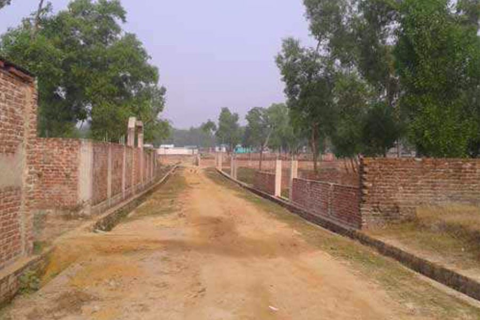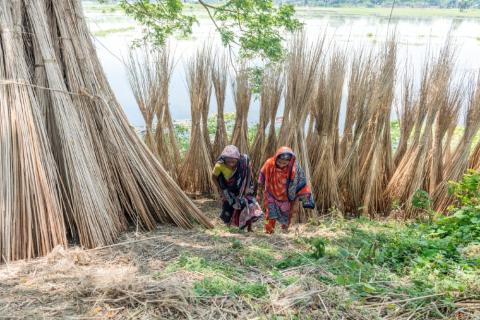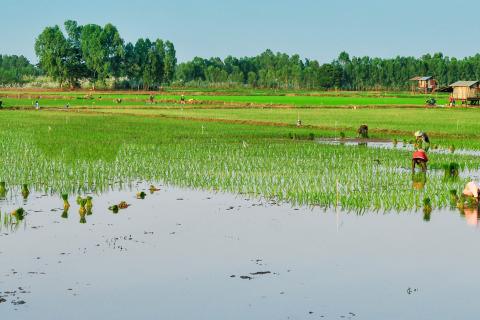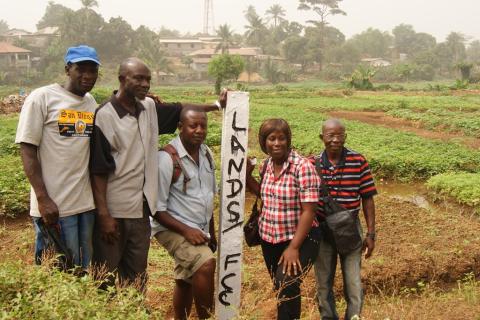Implementing land trust in Bangladesh
Blog by Monzur Hossain and Naoyuki Yoshino, reposted from the Financial Express, Bangladesh
Bangladesh is one of the most densely populated countries in the world but with a land-man ratio of 0.06 ha per person, it occupies the lowest rank. The increasing population begets an increasing demand for non-agricultural land which further contributes to an aberrant hike in land price. This obstructs investment opportunities and cuts down affordable housing facilities for the common people.
Land tenure security as a basic building block to guarding and sustaining natural resources
For centuries, people around the world in the continents of Asia, Africa, Oceania and Latin America have been living off the forests and other natural resources to sustain their livelihoods, their cultural practices and sometimes even religious rituals.
The Great Soybean Expansion: Miracle or Curse?
The global soybean trade was worth about 9.5 billion of US dollars in 2000. By the end of this year – in 2020 – it is projected to exceed 60 billion[1]. This is just one of the many figures that explains why the last two decades might be remembered as the Great Soybean Expansion, the period when soybean became one of the most traded commodities in the world – but also one of the most controversial.
Could youth land rights hold the key to transforming agriculture and stimulating economic development in Africa?
Over 60 percent of Africans are under the age of 35 – a well-documented “youth bulge” representing both an enormous challenge and a tantalizing opportunity for the continent.
Why food production hinges on women
Landless women should be recognized as farmers, and given their due tenurial rights
“Small farmers feed the world” -- does this make any sense to us? If it does, then what is the paradigm shift and what has it done, or is trying to do differently, to uphold and promote this hard truth?
Secure Land Rights: A Sustainable Solution At the Intersection of Climate Change and COVID-19
COVID-19 and climate change are impacting all of us, but the dual disasters have a disproportionate impact on communities in emerging economies. These impacts are felt most acutely in rural areas, especially among indigenous communities and minority groups, and by women and others who are marginalized within those groups.
As Agribusiness Sustainability Initiatives Face Flak, Here’s How They Can Do Better
Since last year, 35,000 people in Uganda’s Kiryandongo district were forced from their lands to make way for large-scale farming, including at gunpoint and by a sugar firm with international backing.
From chieftaincy to women’s land rights and covid-19, how an initiative is supporting land rights in Sierra Leone on different fronts
Interview with Christiana Ellie, M&E officer in Land for Life Initiative
1) Can you tell us a bit more about the Land for Life Consortium- Sierra Leone?
Land for Life initiative Sierra Leone, is an endeavour of five legally established civil society organizations that are working together as a consortium to roll out the initiative in five districts of the country. These organizations have their own specific objectives around land governance.
Addressing land and policy grabs in the shadow of COVID-19
Reports suggest the COVID-19 fallout is providing opportunities for elites to seize lands and rewrite regulations. We need effective responses to secure land rights and lay the foundations for a just recovery.
Privatization and dispossession in the shadow of the Pandemic
Law Project 2.633/2020 is presented to the Brazilian Congress and may sign a point of no-return in the struggle for the Amazon and its socio-biodiversity
Community participation will be essential to the success of India’s rural property mapping effort
The Government of India has announced an ambitious effort to map residential areas in villages using drone technology and provide “property cards” to these rural owners. In its first phase, the Svamitva (“Ownership”) scheme will map 100,000 villages in six states, with the scheme ultimately expanding to all of India’s 662,000 villages.












